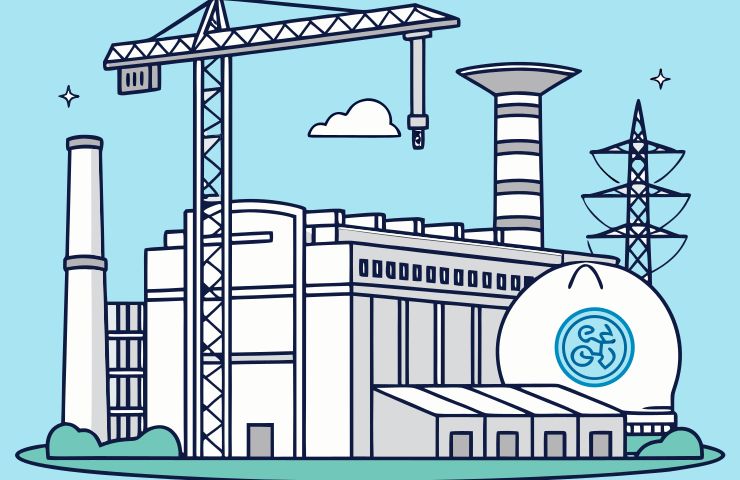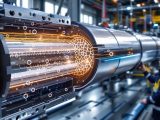
Hydrogen Production Gains Traction with Singapore’s YTL PowerSeraya’s First Hydrogen-Ready CCGT Plant
October 27, 2025It’s not every day you come across a power plant built from scratch with hydrogen front and center. But that’s exactly what YTL PowerSeraya is up to. During Singapore International Energy Week in late October 2025, the energy arm of YTL Power International kicked off construction on a 600MW hydrogen-ready combined cycle gas turbine (CCGT) plant over at Pulau Seraya on Jurong Island. They’re eyeing December 2027 for commercial ops, with a price tag of about S$800 million. At launch, the turbine will juggle a 50/50 mix of hydrogen and natural gas, then ramp up to a full hydrogen diet as the hydrogen production market takes off.
Project Overview
Back in January 2024, the Energy Market Authority (EMA) tapped YTL PowerSeraya to develop and run this show under its fresh Centralised Process for generation capacity. Think of it as a fast pass for low-carbon tech, matching supply plans with Singapore’s climate goals. Since the site sits right next to the existing Pulau Seraya power station—one of the island’s OG thermal plants—it’s got instant hookups to the national grid, fuel berths, and cooling water systems.
Once it’s up and running, the plant should phase out some of those ancient oil-fired units, add a splash of flexibility to the grid, and cover the power needs of around 864,000 homes—that’s about 15% of Singapore’s peak demand. Even better, it shows you can repurpose old sites into hydrogen hubs without tearing everything down and starting over.
Financing & Partnerships
Closing the money gap was a big milestone. By mid-2025, YTL PowerSeraya locked in a S$500 million syndicated term loan with top local banks:
- DBS Bank—Mandated Lead Arranger and Sustainability Structuring Adviser, writing up the green bond playbook;
- OCBC—Co-lender and Sustainability Structuring Adviser, setting KPIs tied to emissions targets;
- Maybank—Co-lender with regional clout, helping spread out credit risk.
This lineup of lenders underlines growing confidence in backing hydrogen infrastructure. On the tech side, GE Vernova is supplying its reliable 9HA.01 gas turbines, SEPCOIII is handling the EPC work, and Air Liquide is running pre-combustion carbon capture studies. It’s a blend of financial muscle and technical know-how that should keep things on track.
Technical Details
Here’s the nitty-gritty:
- 9HA.01 Turbines: Outfitted with DLN2.6e combustion tech, these units will take up to 50% hydrogen by volume right out of the gate, with a clear upgrade path to 100%.
- High Efficiency: With a combined cycle setup, they’re shooting for over 63% net thermal efficiency on natural gas, with only minor tweaks needed for hydrogen blends.
- Modular, Hydrogen-Ready Design: All the piping, valves, and burners are prepped for a full switch-over down the road—no massive retrofits required.
- Carbon Capture Exploration: Preliminary CCS studies suggest they could shave off up to 15 million tonnes of CO2e over the plant’s lifetime, pending final FEED results.
Historical Context
Jurong Island has been Singapore’s petrochemical and energy stronghold for decades. Since the 1970s, Pulau Seraya has hosted wave after wave of thermal upgrades—from old-school oil burners to modern natural gas CCGTs. This new venture is the Republic’s first purpose-built hydrogen-ready CCGT, building on a legacy of efficiency gains but taking a major step toward industrial decarbonization. It dovetails perfectly with the Carbon Pricing Act and the 2022 Grid Support Services market reforms, showing how policy and finance can team up to speed up the clean energy transition.
Market Impact
By weaving hydrogen into its baseload mix, Singapore is sending a clear signal across the region: sustainable energy and reliability can go hand in hand. The plant’s bankable design could ease perceived risks for future hydrogen production and storage projects, unlocking more investment in both supply chains and downstream uses—think hydrogen fuel cells in transport and heavy industry.
Plus, pairing CCS with hydrogen blends puts Singapore on the cutting edge of industrial decarbonization—a real competitive edge in Asia’s energy transition. Neighbouring nations are already taking notes, eyeing similar financing and regulatory blueprints for their own hydrogen infrastructure builds.
Strategic Implications
For policymakers, this project proves you can breathe new life into existing assets to hit low-carbon targets. It’s a template for syncing regulations like the EMA Centralised Process with real-world project timelines and bankability needs. For investors, seeing major banks and tried-and-true tech suppliers on board takes a lot of the early-stage risk out of hydrogen ventures.
We’ll be keeping tabs on how those turbines handle higher hydrogen blends and how the CCS integration unfolds. Industry analysts reckon that a win here could slash the cost of capital for the next round of plants by up to 20%, giving the zero-emission shift a serious boost.
Next Steps
- Mid-2026: Nail down hydrogen offtake agreements and solidify supply chains for the initial blend;
- Late-2026: Finish installing blend-capable piping and control systems;
- Q1 2027: Run performance tests at progressive hydrogen levels;
- December 2027: Hit 50% hydrogen operation and kick off baseline emissions reporting;
- 2028–2030: Move toward full hydrogen capability and get those CCS modules up and running.
At the end of the day, YTL PowerSeraya’s hydrogen-ready CCGT plant is more than just bricks and turbines—it’s a proving ground for the region’s next leap in sustainable energy. Keep an eye on this space—these turbines aren’t just spinning to light up homes; they’re fueling a shift toward a cleaner, more secure energy future.


 With over 15 years of reporting hydrogen news, we are your premier source for the latest updates and insights in hydrogen and renewable energy.
With over 15 years of reporting hydrogen news, we are your premier source for the latest updates and insights in hydrogen and renewable energy.